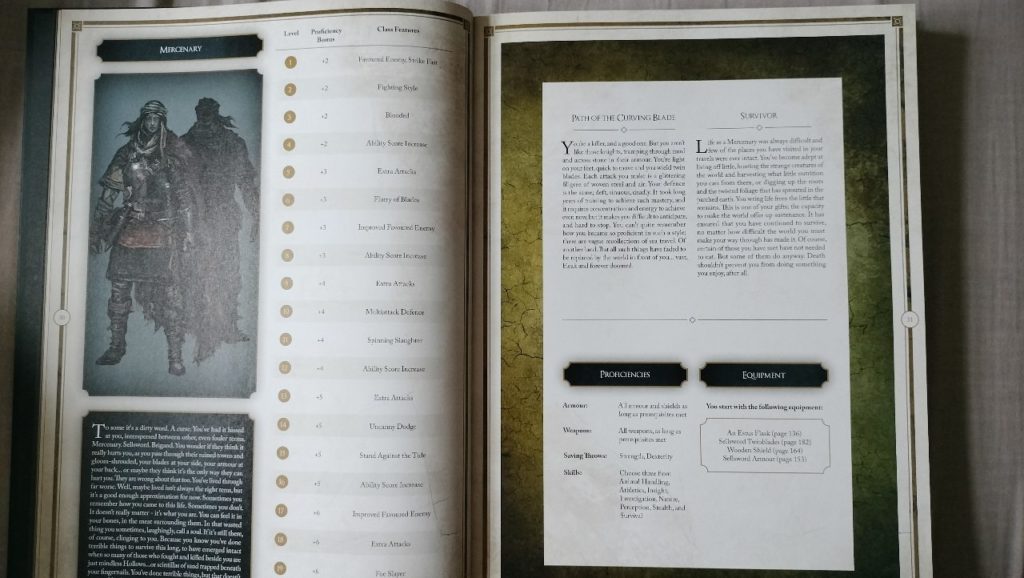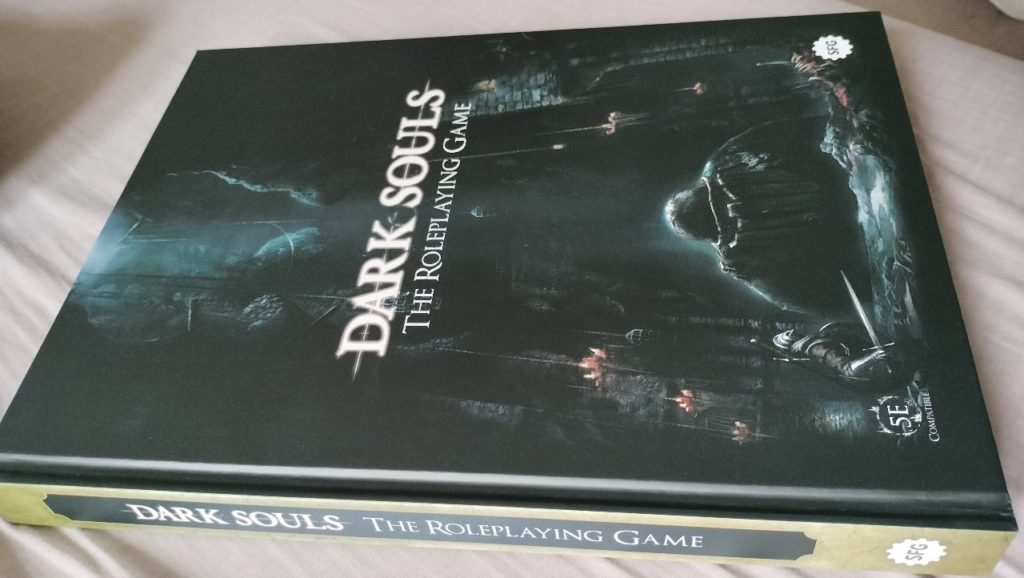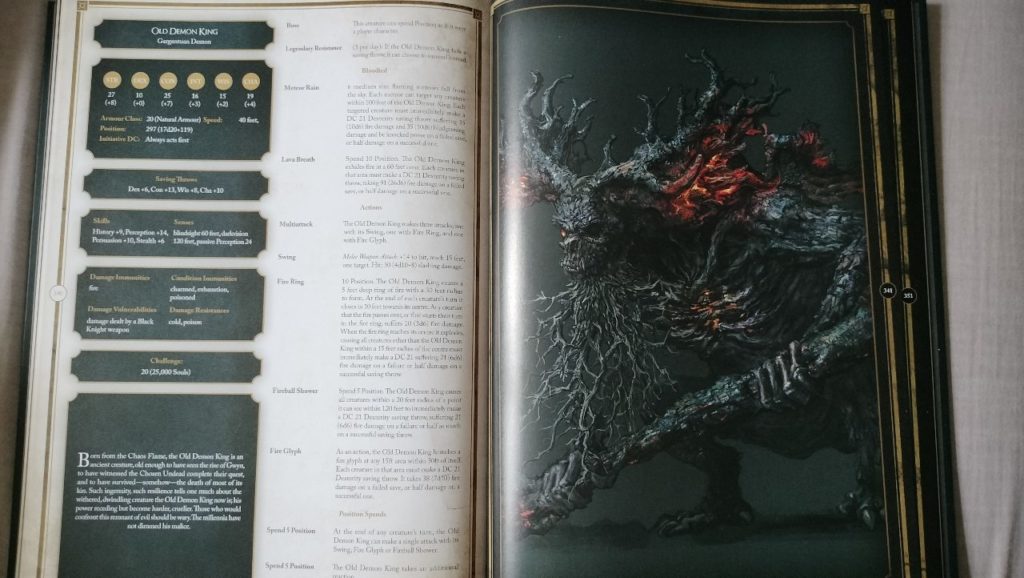Dark Souls: The Roleplaying Game review
At this point, some 13-odd years since the release of Dark Souls and a little longer since its progenitor, Demons’ Souls, hit the PlayStation 3, there are few people even among casual gamers who aren’t aware of the franchise’s core tenets. Bastard-hard action RPGs heavily influenced by Kentaro Miura’s brutal manga, Berserk, and built upon the simple thesis that perseverance will eventually pay off, From Software’s legendary series is so seminal that it has spawned an entire genre of games by developers keen to challenge and confound their audience. Categorised by deep, obfuscating lore, tough-as-mithril bosses, and decaying grandeur, Dark Souls and its younger siblings from Bloodborne through Elden Ring are video games built on the tears of gamers, both of frustration and conquering joy. A tabletop roleplaying game in this universe should be an instant win then, by all accounts – and yet Dark Souls: The Roleplaying Game from Steamforged Games struggles with a few tough bosses of its own.
Perhaps the biggest – and most immediate – hurdle I encountered was that Dark Souls: The RPG uses the 5th Edition D&D ruleset, which is designed around adventuring parties, and thus the game kind of expects that you’re tackling it with a group. This in itself is hardly representative of the Dark Souls experience. Oh, you can play with others, summoning help for certain sections and with certain bosses, but Dark Souls, for me at least, is a solitary experience. There are campaign scenarios presented within the (admittedly beautiful) pages of the hardback that seem to require more than one player, and the difficulty – as well translated as it is – doesn’t lend itself well to a solo adventurer.

It also features much, much more content from Dark Souls 3 than any of the others, with a few elements of Dark Souls 1 (Artorias and Sif, but little else) and no influence from Dark Souls 2 at all. For example, it’s even set in Lothric and not Lordran, and the majority of enemies are taken directly from the third game. Quite why is unknown, aside from the fact that Dark Souls 3 is largely more popular than the first game.
The other main element that holds back Dark Souls: The Roleplaying Game is that its dark, decaying world and deliberate level of difficulty is at odds with the maturity level of the average D&D adventuring party. You can of course choose to play it po-faced and grim, but most of the fun in D&D comes from the moments of pure, insane creativity that flash in an instant then affect the course of the campaign for the next several hours, stealing an item or killing an NPC on a whim that then has far-reaching consequences for the group. And while these moments are possible to an extent, there’s the sense that the Dark Souls RPG doesn’t want you to do that. It’s challenging, and the world is fun to explore – particularly if you have a DM with a bit of a sadistic streak – but it often misses the mark in terms of creativity. I mean, you can still opt to do the unexpected, but you’re somewhat constrained by the dreary, apocalyptic rules of Lothric.
CHECK IT OUT: “From the dark, they came…” | Dark Souls: Replayed
Creating your character is fun, as the game offers ten classes to choose from (and for fans, yes, the Deprived is an option) as well as four “Origins”, the Brute, the Caster, the Fencer, and the Jack of All Trades. Again though, while these are designed to allow you to insert your own Unkindled directly into the existing world, they could be seen by some as restrictive. Oddly, regardless of your choice of class, you can use all armour and weapons as long as you meet the prerequisites, which seems like a mostly amicable meeting point between Dark Souls and D&D. It’s worth noting that those with experience in both properties will spot immediate crossovers, such as the Knight having access to a Second Wind ability, a staple of D&D Fighters.

One of the toughest things to translate, of course, is the combat. Dark Souls combat is, in many ways, a dance. You don’t go far in the franchise by mashing buttons and hoping for the best. It requires patience, precision, panache – and a certain amount of luck. From lowly mobs to towering grotesques, every single enemy in a Dark Souls game has the capacity to end you, and chucking all that into standard D&D dice rolling doesn’t do justice to the intricacies of Dark Souls combat. While Ability Scores and Advantage modifiers feature, there’s also a further mechanic called Position which attempts – with some success – to factor in health and stamina management, something utterly crucial to not only Dark Souls but the entire Soulslike genre.
Position replaces HP, presenting an amalgamation of not only a character’s health and stamina but also their Constitution modifier, and various stats pulled from their class and origin. This allows characters to “level up” in meaningful ways that affect survivability, but also provides each player with a risk/reward mechanic whereby they can expend Position to represent their character giving it their all, so to speak. For players of the Dark Souls video games, this is best described as making that last desperate attack when your health and the boss’s health are hanging on by a single hit, or using all your mana in one huge spell that will certainly spell death if you whiff it, or perhaps performing a perfectly timed parry that turns the balance of a battle. In Dark Souls: The Roleplaying Game, Position allows you to add further modifiers to attacks and actions that reduce your immediate survivability but afford a clutch victory right when you need it.

It might say more about me personally than the game, but one of the most enjoyable elements of Dark Souls: The RPG is the tome itself. It’s a beautiful, glossy hardback filled with rules and lore, but also covered in Dark Souls art, from monsters and classes to armour, weapons, and locations. It’s a gorgeous book to just leaf through, and for fans of the greater franchise it’s as much a piece of Collector’s paraphernalia as game of its own.
For DMs, there’s a whole section dedicated to scenarios, with areas like the Firelink Shrine, Cathedral of the Deep, and Irithyll of the Boreal Valley. Each area comes with a list of random enemy encounters, bosses, NPCs, and things to discover if your adventurers choose to search and risk their lives for loot. The bosses are insanely tough, loaded with special abilities and attacks that will make mincemeat of the unprepared, but luck, teamwork, and creativity can help you overcome any challenge. I ran a few bite-sized mini campaigns that pitted higher level players against some of the bosses, and while the game can’t hope to fully translate the pulse-pounding thrills of the video games, each made for an exciting time. And for longer campaigns, it presents plenty of opportunities to explore and experiment.
Ultimately then, Dark Souls: The Roleplaying Game is a tough one to recommend to any but genuine fans of FromSoftware’s franchise. D&D groups might get a kick out of the darker, gloomier, more doom-laden setting, and more combat-focused parties will relish the challenge, but this certainly caters more to video game fans than TTRPG fans. It’s a stunning book and a great addition to any collector’s shelf, but it’s not the best use of – nor the best marriage for – the 5e ruleset.




